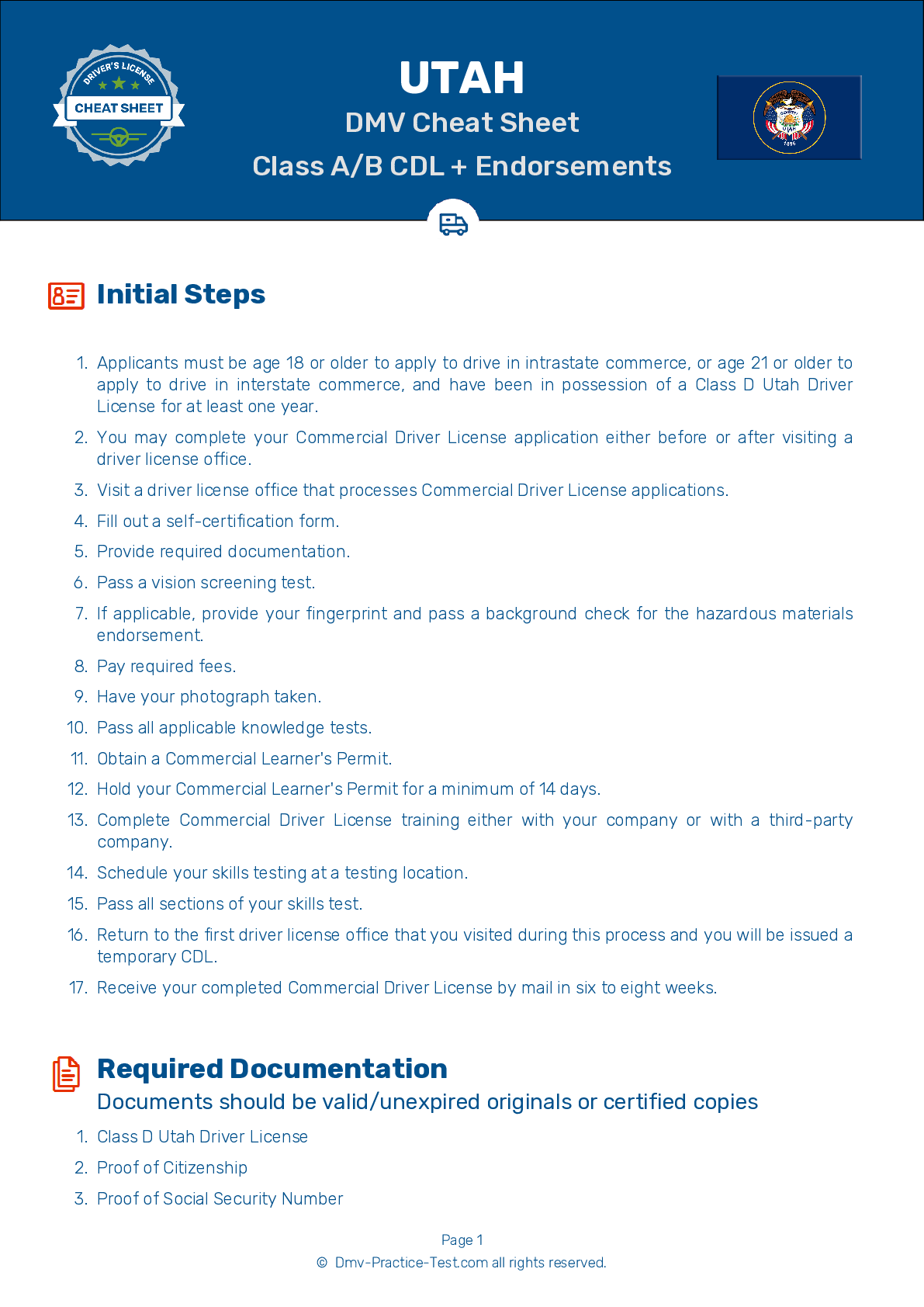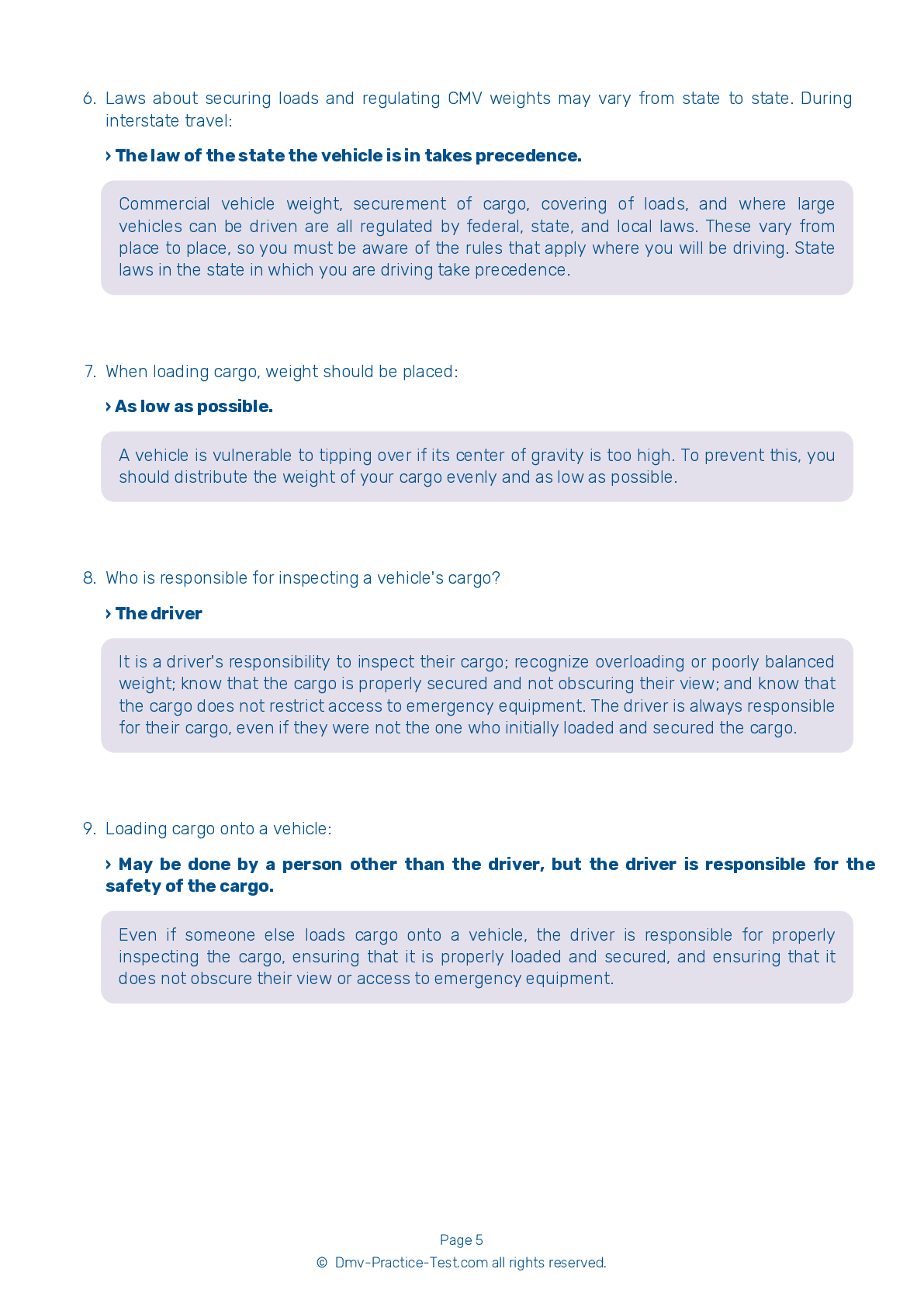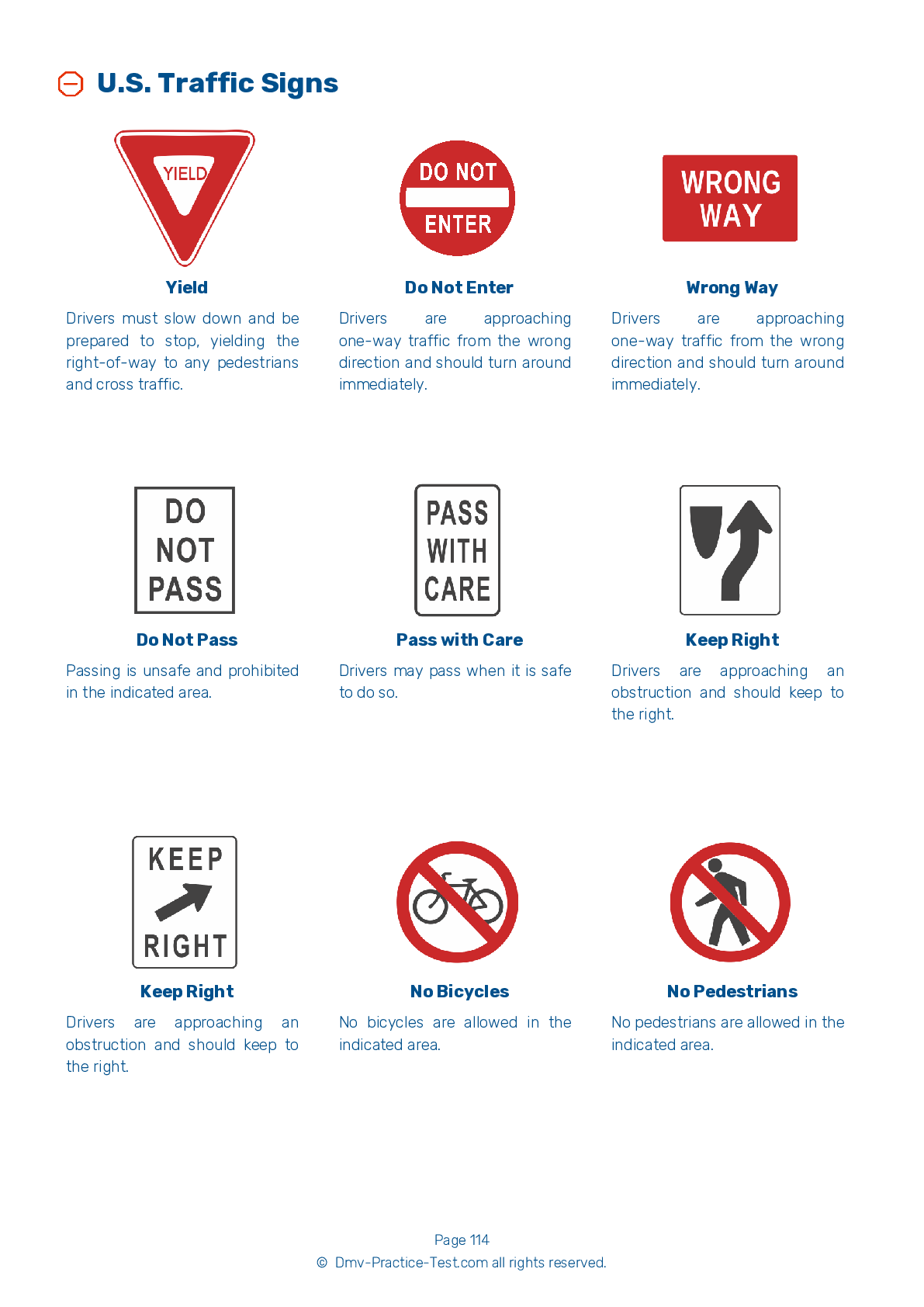Combination #2
Combination Vehicles Practice Test | Utah 2025 #2 Page 3 of 4
Train for FREE online with our Utah CDL combination vehicle test. The official exam test consists of several obligatory parts, with all of them checking your knowledge of different blocks of road rules. If you need to obtain a UT combination license in 2025, practice as much as possible. Free sample tests published on our website will help you check and improve your knowledge and boost your grades. Please bear in mind that DMV requirements for issuing a combination license may vary from state to state.
30
25
20
17 . The service air line is attached to the:
Steering wheel.
The service air line carries air and is controlled by either the foot brake or trailer hand brake. The service air line is attached to relay valves, which allow the trailer brakes to be applied quickly.
18 . What is another name for the service line?
The parallel line
The trailer service air line may also be referred to as the control line or signal line.
19 . A combination vehicle has:
Four air lines.
Combination vehicles have two air lines: a service line and an emergency line.
20 . If a load is placed on one side of a trailer, the trailer:
Positioning the weight of a load on one side of a trailer may cause the trailer to lean to that side, increasing the risk of a rollover during turns and lane changes.
21 . When coupling, you should:
When coupling air brake hoses, you should make sure the proper pairs of gland hands are connected. They are sometimes color-coded to help drivers avoid mistakes. Typically, blue is used for service lines and red is used for emergency lines.
22 . When coupling a trailer, you should:
When coupling air brake hoses, you should make sure the proper pairs of gland hands are connected. They are sometimes color-coded to help drivers avoid mistakes. Typically, blue is used for service lines and red is used for emergency lines.
23 . A driver should test the tractor protection valve by:
You should test the tractor protection valve by allowing the air supply to properly charge, turning off the engine, then releasing air from the system by pressing the brake pedal several times. The tractor protection valve should move into its emergency position when psi drops to an unsafe level.
2025 Utah | Frequently Asked Questions
To secure a CDL Bus endorsement in Utah, you must first have a Commercial Driver's License (CDL). Then, pass the Passenger Vehicle written test. After passing the test, you have to complete a training course and pass a skills test in the type of vehicle you will be driving. Lastly, pay the required fees.
To obtain a CDL Bus license in Utah, you need a valid driver's license, be at least 21 years old, and pass a vision test. You must also complete a CDL application and pass the General Knowledge test, Passenger Transport test, and School Bus Endorsement test if applicable. Lastly, you must pass a pre-trip vehicle inspection and a skills test.
Yes, specific training is necessary for a CDL Bus endorsement in Utah. After passing the Passenger Vehicle written test, you must complete a training course that includes both classroom and hands-on driving instruction. This training is designed to provide you with the skills needed to safely operate a bus and handle passengers.
CDL Bus licenses in Utah fall under three classifications: Class A, B, and C. Class A is for vehicles with a combined weight over 26,001 lbs where the towed vehicle exceeds 10,000 lbs. Class B is for single or combination vehicles where the single vehicle exceeds 26,001 lbs. Class C is for vehicles designed to transport 16 or more passengers, including the driver.
No, you cannot use your personal vehicle for the CDL Bus driving test. The vehicle you use must match the class of CDL you're applying for. So, for a bus endorsement, you'll need to test in a commercial bus. This ensures you can handle the specific vehicle type in real-world scenarios.
During the CDL Bus driving test in Utah, you will be evaluated on various skills including pre-trip vehicle inspection, basic vehicle control, and on-road driving. This includes maneuvers like stopping at designated points, backing up in a straight line or into a docking area, turning, merging and exiting traffic, and navigating intersections or railway crossings.
Yes, to obtain a CDL Bus endorsement in Utah, you must pass a Department of Transportation (DOT) physical examination. This exam ensures you're physically capable of safely operating a commercial vehicle. It covers aspects like vision, hearing, blood pressure, and checks for conditions like diabetes or heart disease that could interfere with driving safety.
No, it is illegal to transport passengers in a commercial vehicle without a valid CDL Bus endorsement in Utah. Driving a commercial vehicle, such as a bus, without the appropriate license can result in hefty fines, license suspension, or even jail time. Always ensure you have the correct endorsements for the vehicle you're operating.
Yes, the CDL Bus endorsement can be added to your existing CDL license in Utah. You'll need to pass the passenger endorsement knowledge test and a skills test in the vehicle group you wish to drive. However, you won't need to apply for a new CDL license altogether.
Yes, there are restrictions for drivers with a CDL Bus endorsement in Utah. Drivers must not have any serious traffic violations within the past two years. They are also subject to random drug and alcohol testing. Moreover, they must comply with federal regulations regarding hours of service, which limit the number of hours they can drive without rest.



